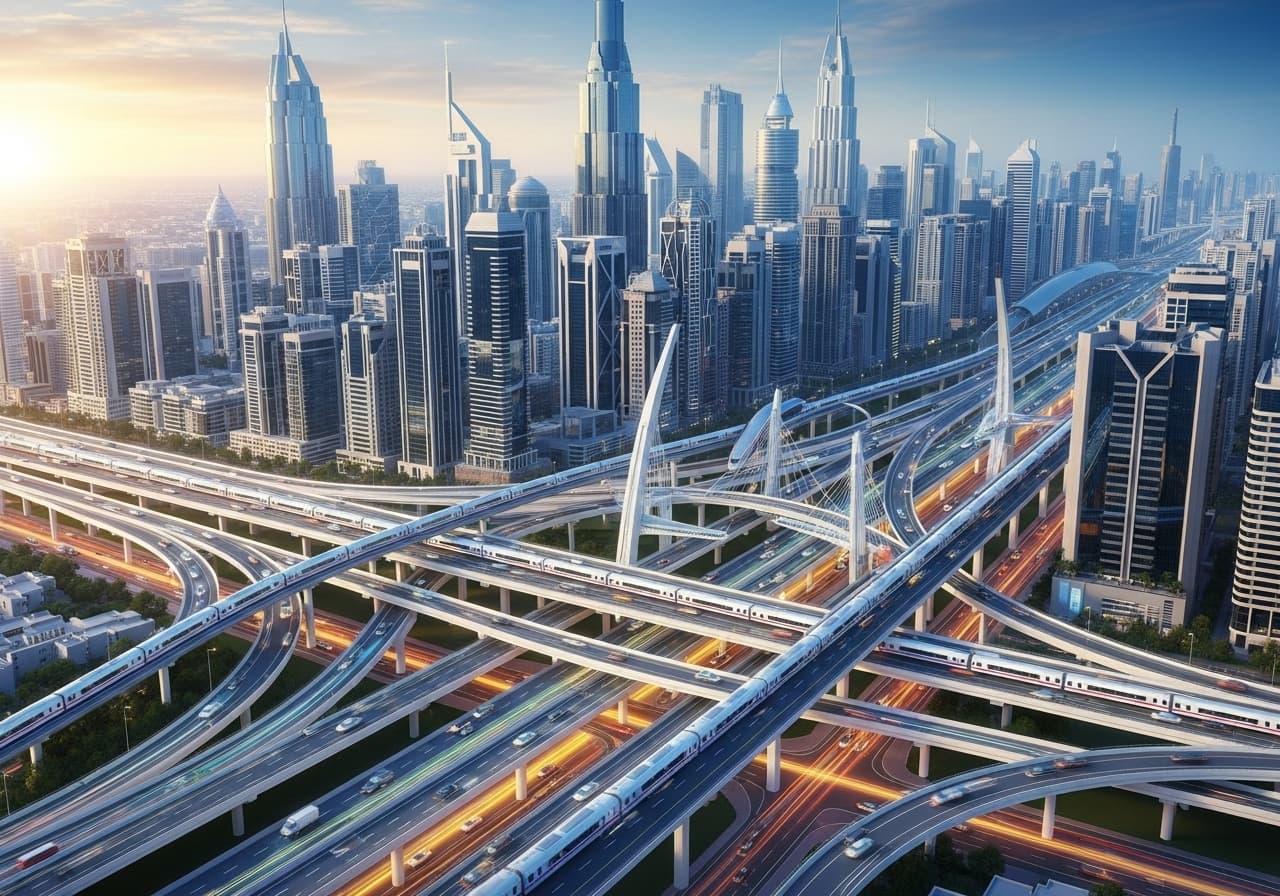Anyone who drives Sheikh Mohamed bin Zayed Road at 6 PM knows the feeling. It’s that slow crawl where minutes bleed into hours. With the UAE’s population now topping 11 million and 8% more cars on the road just this year, that daily grind is getting worse.
The numbers are stark. The average employee loses about 1,000 hours every year simply sitting in traffic. But a serious change is coming.
The UAE government is injecting a massive Dh170 billion ($46 billion) into infrastructure to break this gridlock for good. This isn't a temporary fix; it's a foundational overhaul designed to give people back their time.
Where the Money is Going
This investment translates directly into asphalt, steel, and speed, targeting the country's most packed highways with major expansion projects.
- Al Ittihad Road: This crucial artery will be widened to 12 lanes, adding six new ones to increase its capacity by a huge 60%.
- Emirates Road: The expansion here brings it to 10 lanes, promising a 65% capacity boost and a 45% shorter travel time.
- Sheikh Mohamed bin Zayed Road: This notorious bottleneck is also growing to 10 lanes, which will increase its vehicle capacity by a critical 45%.
Officials are also moving forward with a new 120km fourth federal highway. This single project is designed to absorb an extra 360,000 trips every day, showing a clear focus on planning for the next decade of growth, not just solving today's jams.
More Than Roads: A New Real Estate Map
A faster commute is good news for everyone, but the bigger story is how this spending will reshape the UAE's property landscape. The investment directly impacts property values and is set to create new development hotspots.
The key is connectivity. As these main routes open up, areas once considered too far for a daily commute will become prime real estate.
The Head of MENA Real Estate Research at Knight Frank confirms the ripple effect. "Improved infrastructure, particularly the expanded arterial roads and the Etihad Rail passenger launch, will undoubtedly drive a fresh wave of real estate demand and value appreciation in well-connected communities, especially those on the peripheries of established Dubai districts."
This analysis points to an intentional urban planning strategy. By making outer communities easier to reach, the government is enabling sustainable growth, spreading population density, and unlocking land value across the Emirates.
The Etihad Rail Factor
Adding to this transformation is the launch of Etihad Rail passenger services, scheduled for 2026. The network offers a fast, reliable alternative to driving, knitting the emirates closer together and making inter-city life a practical choice.
This makes it possible to live in a quieter community in a northern emirate and still commute to a Dubai business hub in well under an hour. This isn't a far-off idea; it is a core part of the 2026 vision. This combination of road and rail development signals a radically different UAE, turning today's traffic frustrations into a catalyst for a more connected and dynamic property market.


